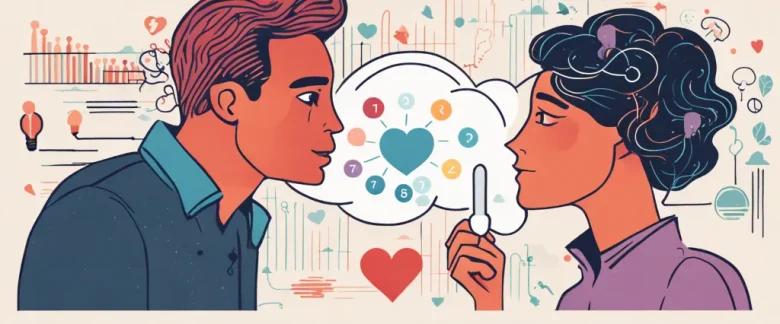In “For the Love of Men,” acclaimed journalist and author Liz Plank delves into the evolving landscape of masculinity, challenging traditional notions and offering an empowering vision for the future. With an astute intersectional lens, Plank explores the challenges men face in a patriarchal society and presents a compassionate call to action for both genders. Drawing from her impressive background as an Emmy-nominated producer and renowned feminist voice, Plank expertly navigates diverse topics such as gender norms, mental health, consent, and male privilege. Illuminating important narratives often overlooked, Plank provides a refreshing perspective on masculinity in the 21st century and leaves readers inspired to redefine what it truly means to be a man.
Chapter 1: The Masculinity Crisis: Examining the Challenges Faced by Men Today
Chapter 1 of the book “For the Love of Men” by Liz Plank, titled “The Masculinity Crisis: Examining the Challenges Faced by Men Today,” delves into the complex issues surrounding the current state of masculinity. Plank explores how traditional gender roles and societal expectations have deeply impacted men, leading to what she calls a “masculinity crisis.”
The chapter opens by highlighting the historical context in which men have been raised to fulfill certain roles, including the provider, protector, and emotionally stoic figure. These traditional notions of masculinity have become deeply entrenched in society, leaving little room for deviation or exploration. Plank argues that this rigidity not only limits men’s potential for personal growth and happiness but also harms women and communities as a whole.
Plank contextualizes her arguments by presenting statistics and studies that reveal the detrimental effects of adhering to strict traditional masculine norms. Men face higher rates of suicide, addiction, incarceration, and violence, which she attributes in part to the pressure of conforming to unrealistic expectations. She further emphasizes the irony of how societal perceptions of strength often prevent men from seeking help or engaging in healthy emotional expression, inadvertently exacerbating these issues.
The author also examines ways in which men are challenging and redefining masculinity in order to create a more inclusive, empathetic, and equitable society. Plank highlights examples of male activists and organizations that actively work towards dismantling harmful gender norms. She urges men to embrace vulnerability, resist toxic masculinity, and foster healthier relationships with themselves and others.
Overall, Chapter 1 of “For the Love of Men” sets the stage for a deeper exploration of the challenges that men face in modern society and encourages readers to reconsider and redefine masculinity in ways that contribute to individual well-being and societal progress.
Chapter 2: Toxic Masculinity: Unraveling the Harmful Effects and Stereotypes
Chapter 2 of “For the Love of Men” by Liz Plank titled “Toxic Masculinity: Unraveling the Harmful Effects and Stereotypes” delves into the concept of toxic masculinity and its detrimental impact on men and society as a whole. Plank begins by highlighting the expectations and stereotypes that have been ingrained in society about how men should behave. These norms often include aggression, emotional suppression, and a need for dominance, which ultimately restrict men’s ability to express themselves fully.
The chapter explores the damaging effects of toxic masculinity, highlighting how it contributes to mental health issues such as depression and anxiety. Plank cites alarming statistics on suicide rates among men, emphasizing the reluctance of men to seek help due to the stigma surrounding vulnerability or seeking assistance.
Plank further dissects the origins of toxic masculinity, tracing it back to societal norms that date back centuries. She contrasts these historical expectations with the shifting gender roles in modern society and the increasing recognition of the harm caused by the pressure on men to conform.
The chapter also addresses the harm caused by toxic masculinity on non-male individuals. Plank highlights instances of harassment, violence, and discrimination resulting from a toxic masculine mindset, emphasizing that dismantling toxic masculinity benefits everyone.
In this chapter, Plank encourages readers to challenge toxic masculinity by redefining what it means to be a man. She emphasizes the importance of promoting positive masculinity that values emotional intelligence, empathy, and healthy communication. By debunking harmful stereotypes and empowering men to embrace their authentic selves, Plank argues that we can create a more inclusive and equitable society for all.
Chapter 3: Redefining Manhood: Exploring New Paradigms of Masculinity
Chapter 3: Redefining Manhood: Exploring New Paradigms of Masculinity
In Chapter 3 of “For the Love of Men” by Liz Plank, the author delves into the concept of redefining manhood and explores new paradigms of masculinity. Plank challenges traditional notions of what it means to be a man, encouraging readers to embrace a more inclusive and nuanced understanding of masculinity.
The chapter begins by addressing the harmful effects of toxic masculinity – ingrained societal expectations that suppress and harm men. Plank emphasizes that the struggle for gender equality is not solely a women’s issue, but that it affects men as well. Society’s expectations for men to always be strong, stoic, and dominant create an environment where vulnerability and emotional expression are discouraged. As a result, men suffer from higher rates of mental health issues, substance abuse, and suicide.
Plank highlights the need for a shift towards a new paradigm of masculinity that includes emotional intelligence, empathy, and a rejection of age-old stereotypes. She explores an array of alternative masculinities, such as feminist men, LGBTQ+ men, and men of color who challenge and redefine the traditional notions of manhood.
The chapter also discusses the importance of male role models who embody these new paradigms of masculinity. Plank introduces readers to a range of individuals making a positive impact in their communities, emphasizing their vulnerability and willingness to challenge societal norms.
Ultimately, Chapter 3 of “For the Love of Men” emphasizes the necessity of redefining manhood in order to create a more inclusive and equitable society. Plank encourages readers to embrace a broader understanding of masculinity that allows men to be their authentic selves.
Chapter 4: Emotional Intelligence: Nurturing Healthy Emotional Expression in Men

Chapter 4 of the book “For the Love of Men” by Liz Plank explores the concept of emotional intelligence and how it nurtures healthy emotional expression in men. Plank highlights society’s expectations and stereotypes surrounding masculinity, which often discourage men from embracing or expressing their emotions.
The chapter begins by discussing the emotional range that men are typically allowed to experience, which is often limited to anger or aggression. Plank argues that this narrow emotional spectrum has negative consequences not only for men themselves but also for their relationships and mental health. She emphasizes the importance of developing emotional intelligence as a means for men to navigate their own emotions and connect better with others.
Plank delves into the cultural and societal factors that contribute to the emotional suppression of men, highlighting the pressure to conform to traditional masculine norms. She challenges these norms and argues that emotional vulnerability not only requires strength but also fosters healthier relationships and personal growth.
The chapter also explores the consequences of this emotional repression, including higher rates of suicide and mental health issues among men. Plank introduces various strategies and exercises that can help men cultivate emotional intelligence, by providing tools for identifying and expressing emotions more effectively.
Finally, Plank encourages men to challenge the gender roles imposed upon them and promotes the importance of empathy in fostering healthy emotional expression in men. By embracing emotions, both positive and negative, men can not only contribute to their own well-being but also help break down societal barriers, ultimately creating a more inclusive and emotionally aware society.
Chapter 5: Breaking Gender Norms: Challenging Traditional Expectations of Masculinity
Chapter 5 of “For the Love of Men” by Liz Plank titled “Breaking Gender Norms: Challenging Traditional Expectations of Masculinity” focuses on the harmful effects of society’s expectations on men’s expressions of masculinity. Plank highlights the detrimental consequences of rigid gender norms and advocates for a more inclusive and compassionate understanding of what it means to be a man.
The chapter begins by acknowledging the traditional expectations placed on men, including emotional repression, dominance, and physical strength. Plank argues that these norms are not only limiting but also contribute to mental health issues among men, such as depression and suicide. By cultivating a culture that discourages emotional expression, men are denied the ability to process their feelings effectively.
Plank introduces the concept of the “Man Box,” a metaphorical prison that dictates how men should behave and punishes those who deviate from these norms. She points out how breaking free from this box can be liberating for men and those around them, as it allows for authentic self-expression and genuine connections.
The chapter further explores the pressures men face regarding their careers and financial success, emphasizing how these expectations can negatively impact their mental well-being. Plank states that men need to be supported in redefining success to include emotional intelligence, empathy, and caring for others.
To challenge these conventional expectations, Plank highlights various individuals and movements that are pushing for change. From LGBTQ+ activists advocating for gender fluidity to organizations focusing on men’s mental health, she showcases the possibility of a more inclusive and compassionate world.
In conclusion, Chapter 5 of “For the Love of Men” emphasizes the harmful effects of traditional masculine norms and urges society to challenge and redefine them. By promoting emotional expression, dismantling the Man Box, and redefining success, men can be liberated from the constraints of toxic masculinity and be encouraged to live authentic, fulfilling lives.
Chapter 6: Intersectionality: Understanding the Interplay of Masculinity with Race, Class, and Sexuality
Chapter 6 of the book “For the Love of Men” by Liz Plank delves into the concept of intersectionality and its influence on the interplay of masculinity with race, class, and sexuality. This chapter focuses on how factors such as race, social class, and sexual orientation intersect with masculinity and shape men’s experiences.
The chapter begins by explaining how intersectionality allows for a deeper understanding of the lived experiences of diverse groups of men. Plank highlights that the standard narrative of masculinity often neglects the experiences of men who do not fit the socially constructed “ideal” masculine image. By considering the various intersections, we can better understand the challenges and inequalities faced by men of different backgrounds and identities.
Plank discusses how race influences masculinity and highlights the experiences of men of color who face both racial discrimination and societal expectations around masculinity. She explores how media representations and stereotypes shape the image of the “angry black man” or the “hypersexualized Latino man” and the impact these stereotypes have on the perceptions of masculinity for men of color.
Additionally, the chapter explores how social class intersects with masculinity. Plank emphasizes that wealth and socioeconomic status often play a significant role in defining masculinity, as men who struggle financially or come from lower social classes often face stigma and are expected to conform to certain ideals to compensate for their lack of economic power.
Lastly, Plank examines the intersectionality of masculinity and sexuality. She emphasizes that traditional expectations of masculinity can often clash with beliefs about manhood and sexual orientation, leading to challenges and discrimination faced by gay and bisexual men who do not conform to societal norms.
In summary, chapter 6 of “For the Love of Men” highlights how intersectionality influences the conceptions of masculinity by examining the interplay with race, class, and sexuality. By understanding the intersections, we can move towards a more inclusive and nuanced understanding of masculinity that acknowledges the diverse experiences of men.
Chapter 7: Men as Allies: Promoting Gender Equality and Empowering Women
Chapter 7 of “For the Love of Men” by Liz Plank is titled “Men as Allies: Promoting Gender Equality and Empowering Women.” In this chapter, Plank discusses the important role that men play in supporting gender equality and empowering women, highlighting the positive impact that their active involvement can have on society.
Plank begins by acknowledging that while feminism has made significant strides in recent years, men still hold a great deal of power and privilege in society. She argues that it is crucial for men to become allies in the fight for gender equality, as their involvement is necessary to challenge and dismantle the patriarchal structures that perpetuate sexism and gender inequality.
The chapter explores various strategies for men to become effective allies. Plank emphasizes the importance of actively listening and learning from women’s experiences, and encourages men to educate themselves about gender issues. She also advocates for men to challenge harmful masculinity norms and engage in self-reflection to unlearn these behaviors.
Furthermore, Plank highlights the significance of men using their privilege and platforms to amplify women’s voices and promote their achievements and perspectives. She discusses the importance of men speaking out against sexism, gender-based violence, and workplace discrimination, and the impact this can have in creating a more inclusive society.
Plank addresses common concerns and objections that men may have about allyship, such as the fear of saying the wrong thing or the worry about being seen as “feminine.” She reassures readers that making mistakes is a part of the learning process, and encourages men to embrace vulnerability and grow from these experiences.
Overall, Chapter 7 of “For the Love of Men” emphasizes the critical role that men play in promoting gender equality and empowering women. Plank’s insightful analysis and practical advice provide a roadmap for men to engage in allyship, creating a more equitable and inclusive world for everyone.

Chapter 8: The Future of Manhood: Embracing a More Inclusive and Compassionate Vision
Chapter 8 of Liz Plank’s book “For the Love of Men” focuses on the future of manhood and advocates for a more inclusive and compassionate vision of masculinity. Plank argues that by challenging traditional gender roles and expectations placed on men, society can create a better future for all individuals.
The chapter highlights the negative consequences of toxic masculinity, such as the higher rates of suicide, substance abuse, and violence among men. Plank emphasizes that these harmful behaviors are not inherent to masculinity but rather a result of outdated societal norms. She calls on men to actively participate in dismantling these expectations to liberate themselves from the confines of toxic masculinity.
Plank suggests replacing the rigid notions of masculinity with an inclusive and compassionate vision. She promotes the idea that men should be allowed to express their emotions and vulnerability without judgment. By embracing a more expansive definition of manhood, society can create conditions in which men are encouraged to form deep and meaningful connections, seek help when needed, and engage in healthier behaviors.
The author also explores the concept of allyship, encouraging men to actively support and uplift women, particularly in feminist movements. Plank highlights the importance of men examining their privilege and actively working towards gender equality. She argues that this shift in mindset benefits both men and women, as it allows for the creation of a fair and just society where everyone can thrive.
In conclusion, Chapter 8 of “For the Love of Men” advocates for a more inclusive and compassionate vision of manhood. By challenging traditional gender norms and embracing vulnerability, men can break free from the constraints of toxic masculinity and contribute to building a more equitable and compassionate world for everyone.
After Reading
In conclusion, Liz Plank’s book For the Love of Men offers a thought-provoking and insightful exploration of masculinity in modern society. Plank challenges traditional notions of what it means to be a man and urges readers to embrace a new definition of masculinity, one that is inclusive, empathetic, and rooted in equality. Through extensive research and personal anecdotes, Plank deconstructs harmful stereotypes and calls for a more compassionate approach to masculinity. By examining the intersections of gender, race, and sexuality, Plank highlights the importance of breaking free from toxic masculinity and creating a more inclusive society for all. With its thoughtful analysis and empowering message, For the Love of Men offers an invaluable resource for anyone seeking to understand and redefine what it means to be a man in today’s world.
1. “The Will to Change: Men, Masculinity, and Love” by bell hooks
– This book explores toxic masculinity and its impact on both men and society. It offers insightful analysis and discusses ways in which men can heal and embrace healthier versions of masculinity.
2. “The Descent of Man” by Grayson Perry
– Grayson Perry, a renowned artist, examines the concept of masculinity in modern society. He delves into the expectations placed on men and provides a thought-provoking exploration of what it means to be a man today.
3. “Manhood in America: A Cultural History” by Michael Kimmel
– Kimmel’s book provides an in-depth historical analysis of masculinity in America. From early colonization to the present day, he examines societal constructions of manhood and the challenges men face in navigating their roles.
4. “Boy: Tales of Childhood” by Roald Dahl
– In this autobiography, Dahl recounts his experiences growing up as a young boy. This book offers a lighthearted and nostalgic perspective on the joys, challenges, and conflicts of boyhood.
5. “Daring Greatly: How the Courage to Be Vulnerable Transforms the Way We Live, Love, Parent, and Lead” by Brené Brown
– While not focusing solely on men, this book by Brené Brown explores vulnerability as a source of strength and connection. It encourages men to embrace vulnerability and challenges the stereotypes associated with masculinity.




